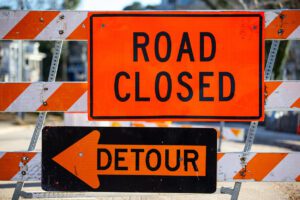If you’re interested in trucking, you know you need a commercial driver’s license (CDL) to drive, but the different types of CDLs out there can be confusing. There are Class A, Class B and Class C CDLs. Which one do you need?
Take a crash course in CDL types. Find out which one you need to start your over-the-road trucking career.
CDL Class Differences
The type of CDL you have determines what you can drive. The classes are based on the vehicle’s or towed trailer’s weight.
All vehicles have a gross vehicle weight rating (GVWR), which is the total weight when loaded with cargo or passengers. You must have a CDL if you operate a vehicle with a GVWR of 26,001 lb. or more.
For those driving combination vehicles, like a tractor-trailer, you’ll add another factor: the gross combination weight rating (GCWR). The GCWR includes the weight of a trailer.
Let’s look at the types of CDLs, especially Class A vs. Class B CDLs.
1. Class A CDL
You need a Class A CDL to be an over-the-road driver! With this type of CDL, you can drive large combination vehicles. You can operate vehicles over 26,001 lb. and tow a trailer that weighs over 10,000 lb.
Here’s what you can drive with a Class A CDL:
- Tractor-trailers
- Tankers
- Flatbeds
- Livestock carriers
When you have a Class A CDL, you can also drive the vehicles under the other CDL classes as long as you have the proper endorsements.
2. Class B CDL
What’s the difference between CDL A and CDL B? While Class A CDLs are for combination vehicles, Class B CDLs are for single vehicles. Commercial vehicles with attached cabs fall here.
A Class B CDL lets you operate a single vehicle weighing over 26,001 lb. It also lets you pull a trailer weighing less than 10,000 lb.
You can drive these vehicles with a Class B CDL:
- Straight trucks
- Box trucks
- Passenger buses
- Dump trucks with trailers
Class B CDL holders can’t drive vehicles under the Class A category but can operate those under Class C.
3. Class C CDL
Transporting passengers instead of cargo requires a Class C CDL. You’ll need this license to drive a vehicle with 16 people, including you and other passengers. Moving hazardous materials also requires this CDL.
Class C is for vehicles weighing less than 26,001 lb. or towing less than 10,000 lb.
Some examples include:
- Small HazMat vehicles
- Passenger vans
- Combination vehicles not included for Class A and B CDLs
What’s A Class D License?
A Class D license is the most common type of driver’s license. Most people on the road hold Class D licenses. With this one, you can operate personal cars, trucks and vans.
States may have different classes of driver’s licenses for personal use. For these drivers, endorsement options include motorcycle and school bus licenses. Before you can earn your CDL, you must have a valid driver’s license.
6 Steps to Earn Your CDL
Earning your CDL is the first step to becoming a driver!
Commercial drivers must be 21 years old and have a valid United States driver’s license. The driver’s license must be valid for the past 12 months. Other qualifications include meeting medical requirements and having a safe driving record
To get a CDL, you must train, pass a written test and practice with a commercial learner’s permit (CLP). Apply to a company-sponsored CDL training program today and explore your next steps.
1. Apply online
Apply online for paid Class A CDL training. The Prime Training Program helps new drivers find their footing. You’ll learn how to operate a tractor-trailer and get paid as you drive in the final stage of training.
You can apply now or call to chat with a recruiter at 866-290-1568.
2. Enroll in CDL training
Once you apply, our recruiters will reach out to you. We’ll collect your information and confirm your eligibility. If you are eligible, we will help you get started by scheduling your DOT physical!
Ask us questions about orientation or training. We’ll help set expectations and share tips, like what to pack for your first week.
3. Get your learner’s permit
Before you come to our terminals, you’ll get your commercial learner’s permit (CLP). You’ll obtain your Class A CLP in your home state.
A CLP works like a student driver’s permit. Think back to when you were 16 and learning to drive a car. You will study for your CLP and take a written test at your local DMV. Once you pass, you can practice driving a tractor-trailer with an instructor.
For your CLP test, you should study the general knowledge, air brakes, combination vehicles and tanker endorsement sections of your state’s driver manual.
4. Go to orientation
Arrive at our terminals for orientation. You’ll start with hands-on training and simulator training. Experienced CDL instructors will teach you the basics. You’ll build a foundation of knowledge in the classroom before driving.
5. Drive with an instructor
After orientation, the real fun begins! You will practice driving with an instructor during CDL training. With your instructor in the passenger seat, you will master backing, turning and using the truck controls. This training prepares you for the CDL skills tests.
6. Take the CDL exam
You’ll take the CDL exam at Prime. Once you pass, you’ll move on to the next stage of training, where you team drive with a trainer. (And get paid weekly compensation!)
After that? Congratulations, you’re a professional truck driver!
Start Your Career
You need a Class A CDL to become an OTR driver. Start your career today by taking the first step. You can apply for our CDL training program online or over the phone.
Apply now or call our Recruiting Department at 866-290-1568. Let’s talk about your future!


